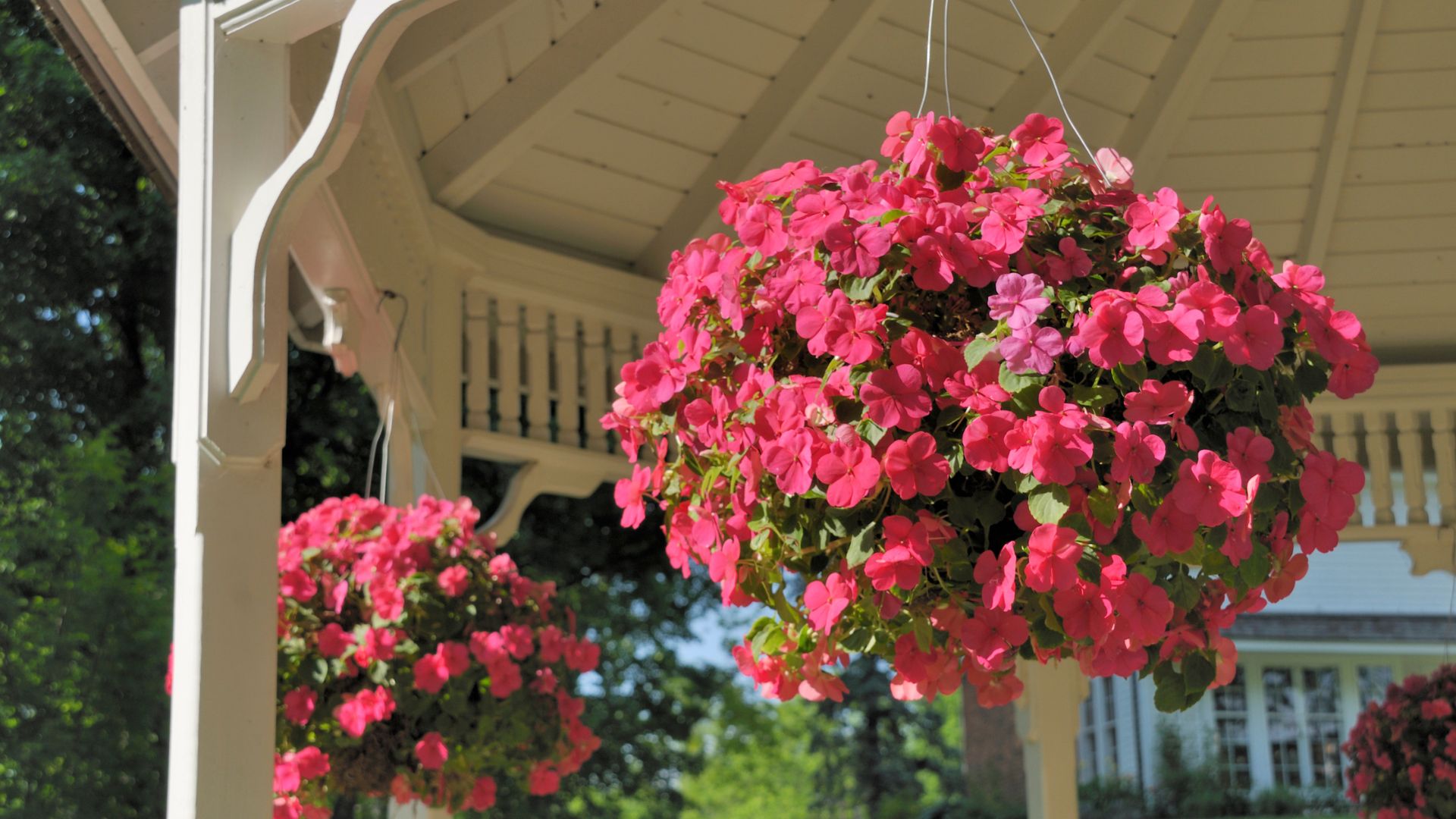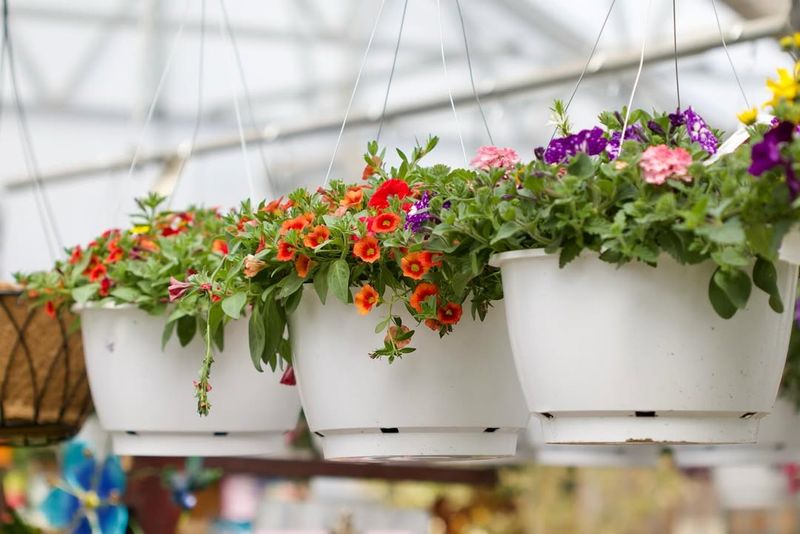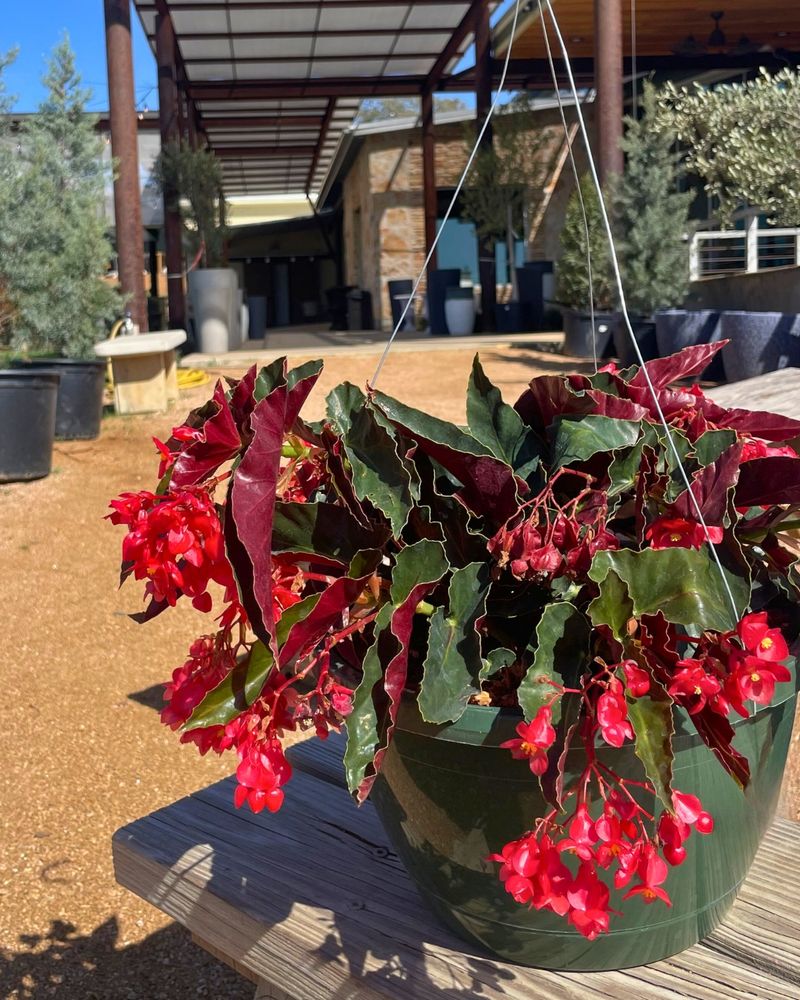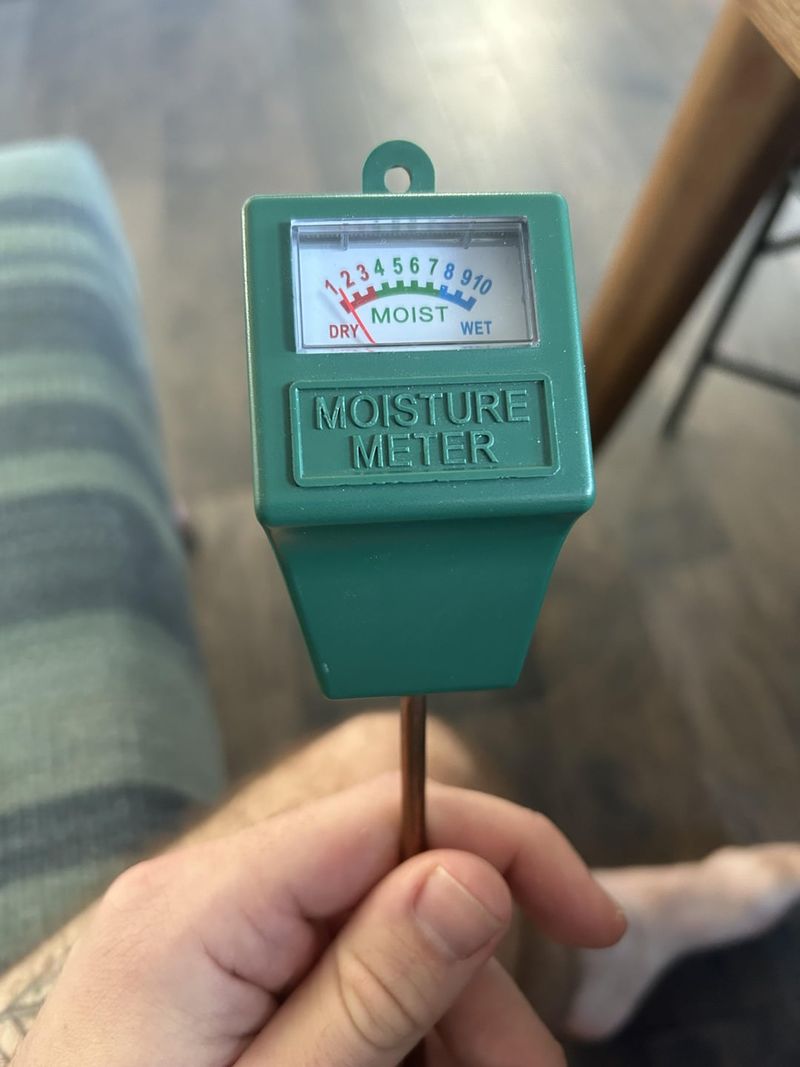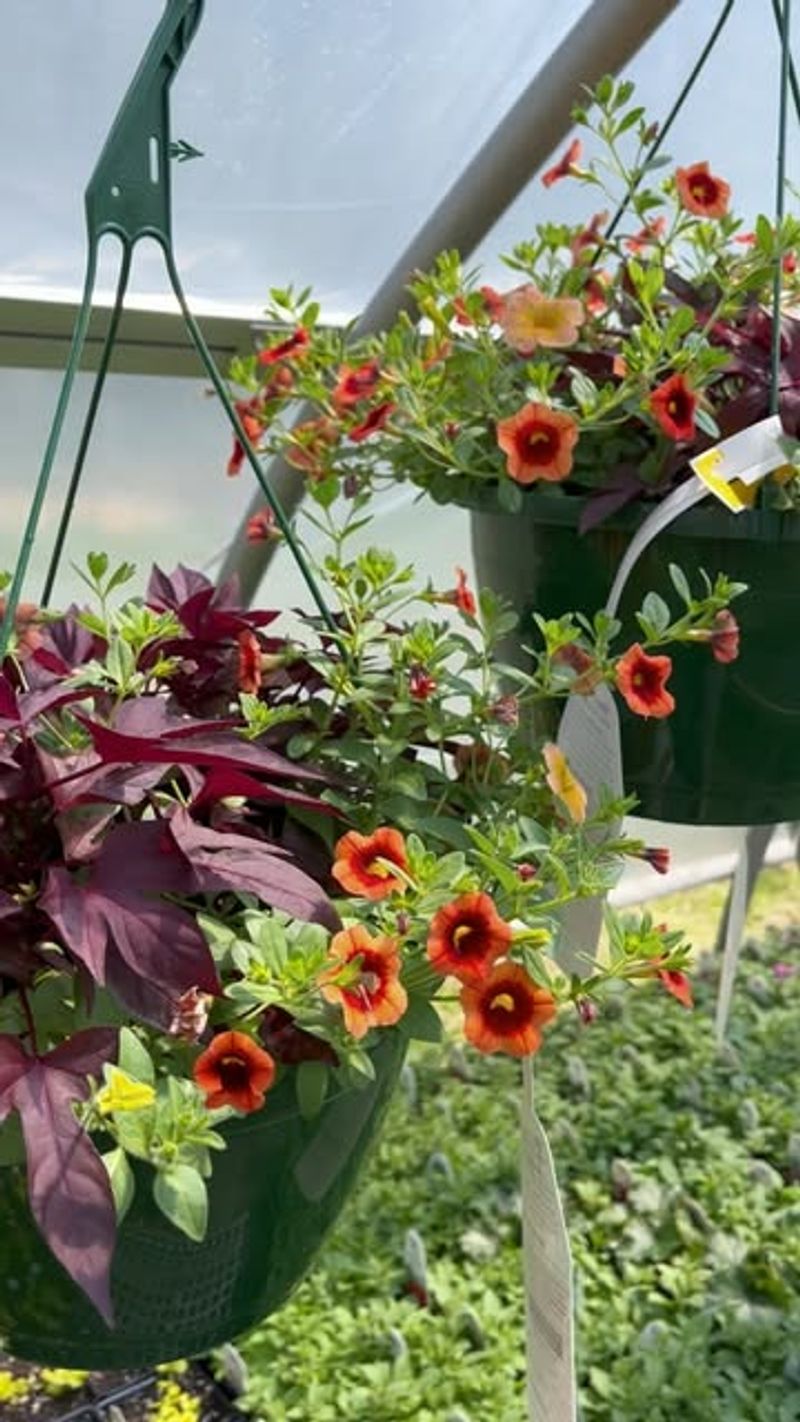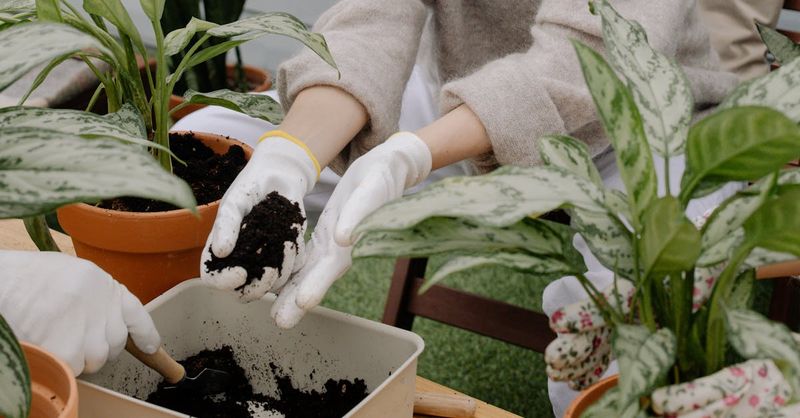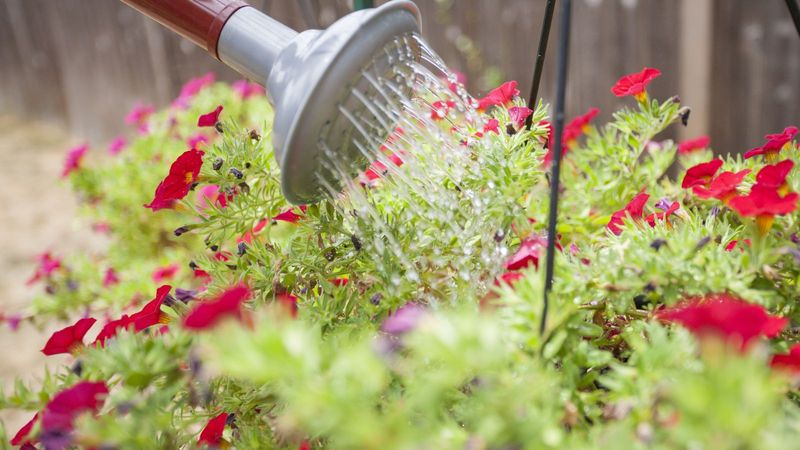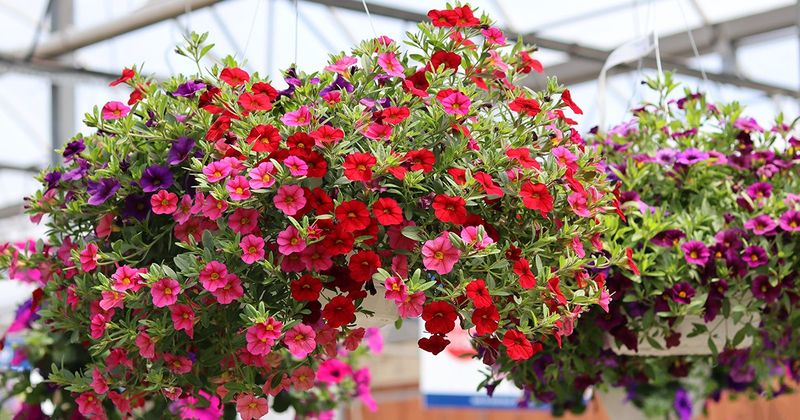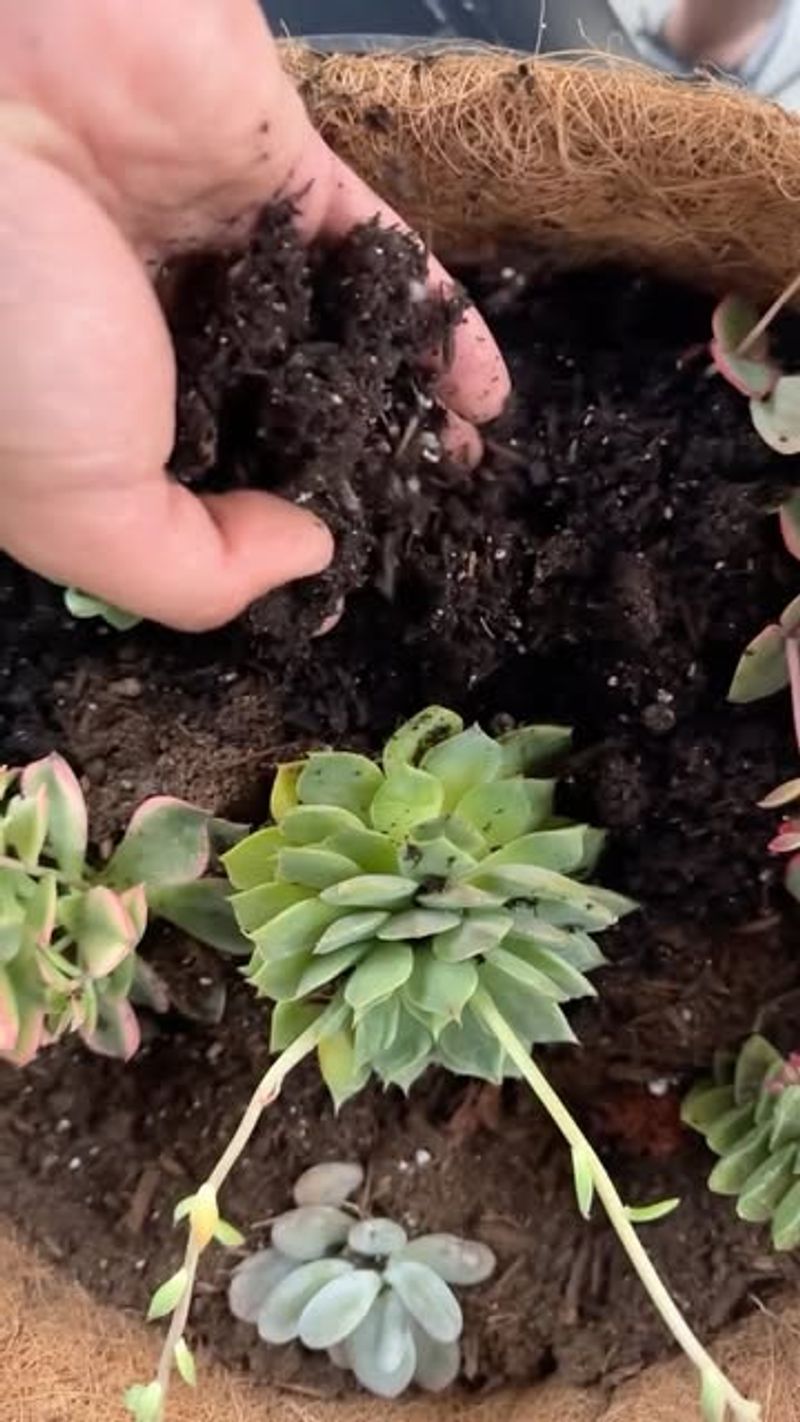Hanging baskets can completely change the look of your porch or garden with their beautiful cascading blooms, but watering them right is key. I’ve seen so many gardeners accidentally drown or dry out their baskets without realizing it.
The good news? Most watering mistakes can be fixed once you know what to do. It took me a while to figure out the perfect watering balance—too much or too little can quickly turn vibrant flowers into droopy messes. Understanding when and how much to water can save you from a lot of frustration and keep your baskets looking their best all season.
Let’s dive into the most common watering slip-ups and how to reverse them, so your hanging baskets stay healthy, full, and bursting with color throughout the warmer months.
1. Inconsistent Watering Schedule
Sporadic watering creates a cycle of drought and flood that stresses plants. One day they’re parched, the next they’re drowning—leaving roots unable to develop properly and flowers dropping prematurely.
Establish a consistent routine based on weather conditions rather than the calendar. During hot spells, daily watering might be necessary, while cooler periods may require only every other day.
I’ve found setting a morning alarm on my phone works wonders for remembering. My once-struggling fuchsia basket completely rebounded after just two weeks of regular care, developing stronger stems and more abundant blooms.
2. Only Watering The Surface
Quick surface watering fools you into thinking the job is done while roots remain bone dry below. Plants develop shallow root systems that can’t support healthy growth, leading to stunted plants despite your regular attention.
Water thoroughly until liquid flows freely from drainage holes, ensuring moisture reaches throughout the soil volume. For severely dry baskets, submerge the entire container in water for 15 minutes to rehydrate completely.
My petunias were struggling despite daily sprinkles until I started proper deep watering. The difference was remarkable—within days, they perked up and started producing the cascading effect I’d been hoping for all season.
3. Evening Watering Sessions
Watering late in the day leaves foliage wet overnight, creating perfect conditions for fungal diseases like powdery mildew and gray mold. The moisture sits on leaves with no chance to evaporate before temperatures drop.
Switch to morning watering, ideally between 6-9am, allowing plants time to dry before evening. For already affected plants, remove obviously diseased portions and apply an organic fungicide if necessary.
Last summer, my morning glory basket developed spotty leaves until I changed my evening watering habit. Simply shifting to morning watering cleared up the problem without any treatments needed—the plants recovered their health within about ten days.
4. Using Ice-Cold Water
Shocking plants with frigid water straight from the hose causes stress that manifests as yellowing leaves and stunted growth. The temperature difference between cold water and warm soil can trigger root contraction and temporary shutdown of nutrient uptake.
Fill watering cans ahead of time, allowing water to reach ambient temperature before application. For immediate recovery, move affected baskets to a sheltered spot with filtered light until new growth appears.
The begonias in my east-facing basket taught me this lesson when they dropped buds after my early spring cold-water soaking. Once I switched to room-temperature water, they rebounded with fresh growth and continuous flowering through summer.
5. Forgetting To Check Soil Moisture
Relying on visual cues alone often leads to misjudging your basket’s true water needs. The surface might appear damp while the root zone remains dry, or vice versa, resulting in either dehydration or overwatering damage.
Develop the finger test habit—insert your index finger up to the second knuckle. If it comes out dry, it’s watering time. For recovery, adjust your schedule based on actual soil conditions rather than appearances or rigid timetables.
After losing several impatiens to what I thought was disease (but was actually inconsistent moisture), I started checking soil daily. This simple practice transformed my hanging displays from struggling to spectacular in just three weeks.
6. Ignoring Weather Changes
Sticking to the same watering schedule regardless of weather conditions leads to serious problems. A basket that needs daily watering during hot, windy days might rot during a rainy week if you don’t adjust your routine.
Be responsive to nature’s patterns—skip watering on rainy days, increase frequency during heatwaves, and check soil more often when it’s windy. During recovery periods, monitor closely as weather transitions.
My hanging ferns suffered terribly one spring because I kept to my regular schedule during an unusually cool, damp week. The waterlogged soil caused yellowing fronds until I adjusted my approach, allowing the soil to partially dry between waterings regardless of the calendar.
7. Watering The Foliage Instead Of Soil
Spraying water over the leaves might seem refreshing, but it’s actually harmful. Wet foliage promotes fungal diseases, causes leaf scorching in direct sun, and doesn’t deliver moisture where plants need it most—at the roots.
Aim your watering can or hose directly at the soil surface, keeping leaves as dry as possible. For plants already showing water damage on foliage, prune affected areas and improve air circulation around the basket.
The difference became clear when I compared two identical lobelia baskets—one watered on foliage, one at soil level. The soil-watered basket produced twice as many flowers and remained disease-free, while the foliage-watered one developed spotty leaves and sparse blooming.
8. Using Containers Without Drainage
Decorative baskets without proper drainage holes trap water at the bottom, creating a deadly swamp for roots. Even with careful watering, excess moisture has nowhere to escape, leading to root rot and eventual plant death.
If your basket lacks drainage, either drill holes or use it as a decorative outer container with a well-draining inner pot. For baskets already showing signs of root rot, carefully remove plants, trim damaged roots, and replant in fresh soil with proper drainage.
I learned this lesson with a beautiful ceramic hanging container that slowly killed my trailing verbena. After transplanting the survivors into a proper basket with drainage holes, they recovered completely within a month, producing even more vibrant blooms than before.
9. Applying Water Too Forcefully
Blasting your baskets with high-pressure water displaces soil, exposes delicate roots, and damages tender stems and flowers. Over time, this creates channels in the soil where water runs straight through without proper absorption.
Use a gentle shower setting on hose attachments or a watering can with a rose spout that delivers a soft, rain-like flow. For damaged baskets, top up displaced soil and create a slight depression in the center to help retain water.
The strawberry basket hanging on my porch suffered from my hasty watering technique until I switched to a gentler approach. The soil stopped washing away, and within weeks, the plants were producing berries again instead of just struggling to survive.
10. Overlooking Humidity Levels
Many gardeners focus solely on soil moisture while ignoring air humidity, which dramatically affects water needs. Low humidity accelerates moisture loss through leaves, while high humidity reduces plant transpiration and water requirements.
During dry spells, consider misting around (not on) plants in the morning or placing baskets closer together to create a microclimate. In humid conditions, increase spacing and air circulation to prevent fungal issues.
My hanging coleus collection taught me this balance—they wilted daily during a dry heat wave despite wet soil. Once I started misting the air around them each morning and grouped them closer, they maintained their vigor without needing additional soil watering.
11. Forgetting To Adjust Seasonal Needs
Plants’ water requirements change dramatically through their growing cycle, yet many gardeners apply the same watering routine year-round. Spring baskets with small plants need less water than summer baskets with mature growth, while flowering periods demand more moisture than dormant phases.
Adjust your watering volume as plants grow—typically increasing from spring to summer, then tapering in fall. For baskets showing seasonal stress, respond to their current state rather than following calendar-based rules.
My hanging geraniums need almost twice the water in July compared to May. When I started matching water to their actual development stage instead of the date, they produced continuous blooms rather than the feast-or-famine flowering I’d experienced in previous years.
12. Ignoring Water Quality
Municipal water often contains chlorine, fluoride, and dissolved minerals that accumulate in soil over time. These chemicals can cause yellowing leaves, brown leaf tips, and nutrient lockout that prevents plants from accessing food even in rich soil.
Collect rainwater when possible or let tap water sit overnight before using to allow chlorine to dissipate. For severe mineral buildup, flush baskets thoroughly with distilled water monthly to leach away harmful salts.
The dramatic improvement in my hanging fuschia baskets after switching to collected rainwater was eye-opening. The leaves darkened to a healthy green, and flower production doubled within just three weeks of changing nothing but the water source.
13. Using The Wrong Soil Mix
Standard garden soil in hanging baskets retains too much moisture, becomes compacted, and lacks proper aeration. This leads to waterlogged conditions even with careful watering practices, causing yellow leaves, fungal issues, and root suffocation.
Replace heavy soils with quality potting mix specifically formulated for containers, which includes perlite or vermiculite for drainage. For recovery, you may need to completely repot struggling plants into fresh, appropriate medium.
After battling constant moisture problems with my hanging petunias, I finally repotted them in proper container mix. The transformation was remarkable—within two weeks, the previously struggling plants put on inches of new growth and developed the cascading habit they’re known for.
14. Neglecting To Water Thoroughly
Quick, shallow watering creates drought-stressed plants with weak, shallow root systems. When you only wet the top inch of soil, roots grow upward seeking moisture instead of developing the strong, deep networks needed for healthy growth.
Water slowly and completely until it flows freely from drainage holes, ensuring the entire soil mass is moistened. For severely under-watered baskets, several thorough soakings over a few days may be needed to rehydrate completely.
I used to give my hanging verbena a quick splash daily, wondering why it remained scraggly. Once I switched to thorough weekly deep waterings, allowing slight drying between, the transformation was amazing—fuller growth, stronger stems, and flowers that didn’t wilt by midday.
15. Overcompensating After Neglect
Finding a crispy, dried-out basket often triggers panic-watering—drowning plants to make up for missed sessions. This shock treatment does more harm than good, overwhelming stressed roots and washing away what little soil nutrition remains.
Rehydrate neglected baskets gradually over several days. Start with a moderate watering, wait an hour, then provide another. Continue this pattern until soil retains moisture properly again, allowing plants to recover at their own pace.
My neighbor’s abandoned calibrachoa basket looked beyond saving, but I resisted flooding it. Instead, I gave it three small waterings daily for a week. By day ten, new growth appeared at the stem bases, and within a month, it was flowering again—proof that patience beats panic when reviving dry baskets.
16. Forgetting To Mulch Basket Surfaces
Exposed soil in hanging baskets loses moisture rapidly through evaporation, especially in windy or sunny locations. Without protection, you’ll find yourself watering constantly yet still seeing plants wilt between sessions as the critical root zone dries out too quickly.
Apply a thin layer of lightweight mulch—coconut coir, fine bark chips, or even decorative moss—to retain moisture and regulate soil temperature. For immediate improvement, add mulch and adjust your watering schedule to account for the slower evaporation rate.
The difference mulch made in my hanging herb baskets was remarkable. Before mulching, my basil would wilt by afternoon despite morning watering. After adding a half-inch layer of coconut coir, the soil stayed evenly moist for days, and plant growth accelerated noticeably within just a week.

